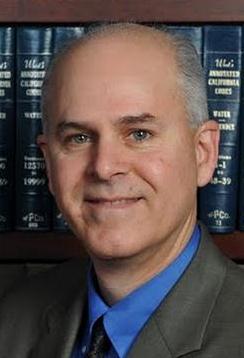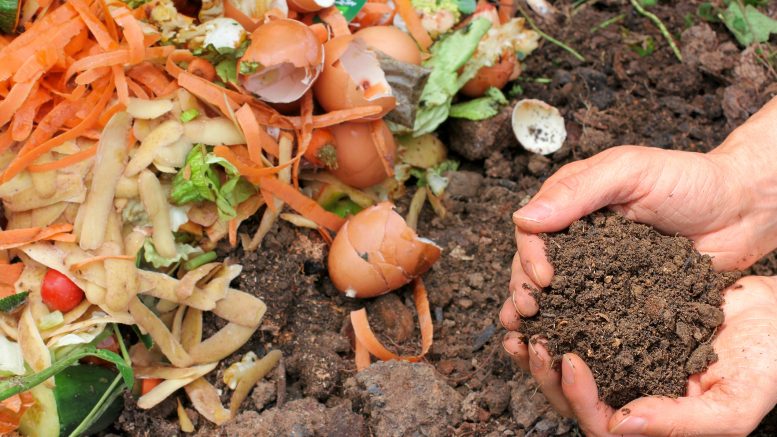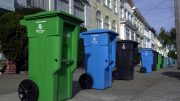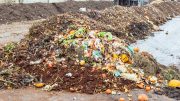Senate Bill 1383, passed in 2016, is designed to significantly reduce the amount of organic waste—mostly uneaten food—that is currently going to landfills. Its secondary goal is to divert still-edible food to hungry people rather than throwing it away. January 1, 2022 was a significant date in terms of the bill’s implementation and projected reduction measures, so we sat down with Neil Edgar, executive director of the California Compost Coalition, to get his perspective.
How is the implementation of SB 1383 going?

California Compost Coalition
Well, it’s a mixed bag. It’s very early days, even though the bill was passed nearly six years ago. It’s not as consistent across the state and its jurisdictions (cities and counties)—some of them are going along with it fairly well and others are struggling with implementation. How fast and how far the implementation will go this year is still an open question, given that we’re only 90 days into (it).
What is the total tonnage of California organic waste product?
In 2017, …there were roughly 27 million tons of organics going into the landfill. So the (SB 1383) goal of 75% diversion and removal of those organics from the landfill means about 20 million tons of materials…, which is roughly one half of all of the disposal in California. (We have a little over 40 million tons of disposal total.) Again, 27 million tons of organics and 20 million targeted to be removed from the landfill by 2025—which is a pretty tall order. This doesn’t just include green waste and food waste; it also includes natural fibers, carpet, textiles, paper and cardboard as well.
What are some of the challenges for California to develop the infrastructure to handle this much waste?
The most significant challenge is the jurisdictions (cities and counties) implementing programs that will establish new collection and processing practices for the materials.
The Bay Area and other parts of the state have organics-processing infrastructure that has been collecting materials for many years. In the case of San Francisco, their program is over two decades old.
But you have no infrastructure in a lot of Southern California, because those (areas) have not historically diverted organic waste, and it’s going to require new infrastructure on a massive scale. Two-thirds of the population, two-thirds of the organic waste. About 14 million tons of organics will need to be diverted out of Southern California and a lot of that (region) has no infrastructure. Once you’ve diverted green waste and food waste that are largely going to be composted, it’s going to take a concerted effort to build the markets that are accessible to those Southern California operations. The markets are out there, but there’s no gift of markets. They have to be built by skilled, marketing salespeople working with agriculture predominantly, but also helping to develop the landscape markets and municipal markets. Even Caltrans use in Southern California is pretty minimal.
“In 2017, …there were roughly 27 million tons of organics going into the landfill. So the (SB 1383) goal of 75% diversion and removal of those organics from the landfill means about 20 million tons of materials…, which is roughly one half of all of the disposal in California.”
Neil Edgar, executive director of the California Compost Coalition
What do you think California should do to fully and successfully implement this program?
I think the question comes down to: ‘How do you pay for this type of a program?’ It’s going to come from all different sections of your wallet, my wallet.
Part of it is going to be increased costs for the products, some of the products we buy, if they need to be re-engineered or redeveloped by the manufacturers, so that consumer (upfront) element is going to reflect some of the costs of these additional changes to our practices.
The rest of it is going to be: ‘Do we provide state funding? Do we provide grants?’ Like we have been. The greenhouse gas reduction funds have been providing grants from CalRecycle to operators to develop the infrastructure. That’s coming out of the taxpayer to some degree, but mostly that’s another consumer (cost). The people that are buying those credits are going to reflect those costs and the price of goods sold, that’s the consumer part. Then at the ratepayer level, those actual users of the solid waste systems, they are the ones that are going to fund the bulk of it. Because all these decisions are local, I think a lot of it is best suited to be paid for directly by the ratepayers and not necessarily by the taxpayers or the consumers per se?
OK, Neil, just for fun:
Ice cream, cake, or pie?
Please.
Are you a dog, cat, or snake person?
Dog.
What celebrity would play you in a movie about your life?
Anyone but Will Smith.
Thanks for your time today.






Be the first to comment on "Neil Edgar of the California Compost Coalition discusses implementing a law to reduce the state’s landfills and feed our state’s hungry residents"